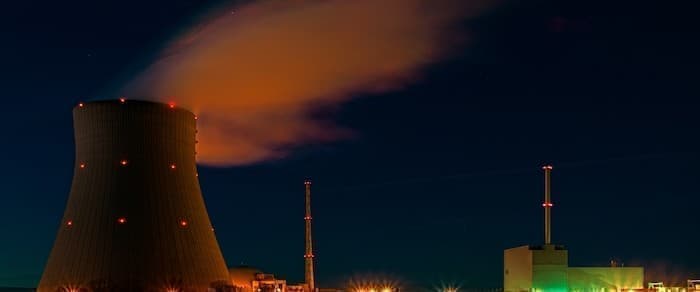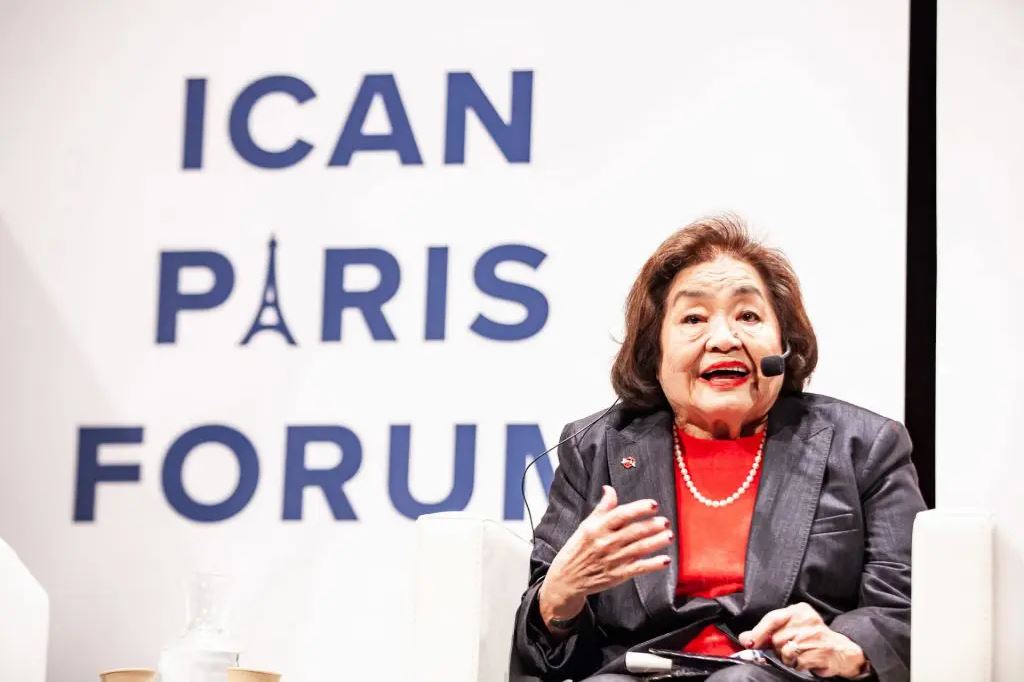The two atomic bombs dropped on Japan in 1945 killed and maimed hundreds of thousands of people, and their effects are still being felt today.
By the end of 1945, the bombing had killed an estimated 140,000 people in Hiroshima, and a further 74,000 in Nagasaki. In the years that followed, many of the survivors would face leukemia, cancer, or other terrible side effects from the radiation.
“Each person had a name. Each person was loved by someone. Let us ensure that their deaths were not in vain.”
- Setsuko Thurlow, survivor of the August 1945 atomic bombing of Hiroshima Nobel Peace Prize acceptance speech, December 2017
The uranium bomb detonated over Hiroshima on 6 August 1945 had an explosive yield equal to 15,000 tonnes of TNT. It razed and burnt around 70 per cent of all buildings and caused an estimated 140,000 deaths by the end of 1945, along with increased rates of cancer and chronic disease among the survivors.
A slightly larger plutonium bomb exploded over Nagasaki three days later levelled 6.7 sq km. of the city and killed 74,000 people by the end of 1945. Ground temperatures reached 4,000°C and radioactive rain poured down.
ICAN: G7 Hiroshima summit fails to deliver progress on nuclear disarmament
“This is more than a missed opportunity. With the world facing the acute risk that nuclear weapons could be used for the first time since Hiroshima and Nagasaki were bombed, this is a gross failure of global leadership. Simply pointing fingers at Russia and China is insufficient. We need the G7 countries, which all either possess, host or endorse the use of nuclear weapons, to step up and engage the other nuclear powers in disarmament talks if we are to reach their professed goal of a world without nuclear weapons” — ICAN Executive Director Daniel Hogsta
Update 20 May 2023: the G7 leaders have just issued the final communique from their summit in Hiroshima. It claims they have “taken concrete steps to strengthen disarmament and non-proliferation efforts, towards the ultimate goal of a world without nuclear weapons with undiminished security for all” but it doesn’t say what these steps are. That’s because it can’t.
What we got from the leaders’ discussion on nuclear weapons yesterday was a rehash of ideas and proposals that have failed to deliver progress over the past three decades. They did not announce anything new or concrete. They couldn’t even bring themselves to follow the G20 and TPNW member states by condemning all nuclear threats. Instead they reserved their condemnation for Russia’s and North Korea’s threats, which, while justified, fails to acknowledge how the G7’s own nuclear doctrines are based on the threat to use nuclear weapons and so contribute to the acute danger these weapons pose to everyone.
The G7’s detailed statement “G7 Leaders’ Hiroshima Vision on Nuclear Disarmament”, issued on May 19, falls far short of providing any meaningful outcomes for nuclear disarmament. After months of preparation and amid high expectations, the leaders are missing the moment to make the world safer from nuclear weapons, instead of confronting nuclear threats with a concrete, credible plan for nuclear disarmament – like the Treaty on the Prohibition of Nuclear Weapons- they are barely even paying lip service to the horrors of Hiroshima, the first city attacked by nuclear weapons.
America’s Ageing Nuclear Fleet Underprepared For Climate Change
Last year, Bloomberg conducted a review of “correspondence between the commission and owners of 60 plants” and made some terrifying discoveries. According to their own risk assessments, “54 of their [60] facilities weren’t designed to handle the flood risk they now face.”
By: Haley Zaremba / oilprice.com

The United States is not only one of the first and foremost nuclear powers of the world, it has also long been the nuclear powerhouse of the planet, being responsible for a whopping two thirds of global nuclear energy production. Domestically, the United States’ nuclear power plants account for approximately 20 percent of the nation’s total electricity and produce over 50 percent of the entire country’s carbon-free energy generation. But these superlatives, both global and domestic, won’t last. As nuclear energy grows around the world, the industry is in deep trouble in the U.S., where the aging nuclear fleet has been battered by a flood of cheap shale oil and natural gas, and is now barely clinging to life thanks to hefty government subsidies and leaving the shockingly high cost of radioactive waste maintenance to the taxpayers.
REMEMBERING HIROSHIMA: This Hiroshima survivor returned to the site of the atomic bombing 75 years later.
Hiroshima survivor Dr. Hideko Tamura Snider, August 9, 2020
On August 9, 2020, Dr. Hideko Tamura Snider, author of “One Sunny Day” and “When A Peace Tree Blooms,” joined WILPF US Disarm/End Wars Committee and #HiroshimaNagasaki75 in describing her experiences before, during and after the Hiroshima bomb, and appealing to us all, “I depend on all of your energy, please continue what you are doing to rule out violent means, especially this inhumane, horrible weapon…. We are not barbarians, we are humans, and let us be truly and fully human….”
https://youtu.be/KYzuoGuqg34
75th Anniversary Timeline webinars at the WILPF US Disarm Committee YouTube channel – https://bit.ly/wilpfus-disarmyoutube
Anti-nuclear protests at Kings Bay
“Our mission is to stop the arms race…it’s a security risk and phenomenally expensive. This has become a business model and it’s deadly.” – Glenn Carroll, coordinator of Nuclear Watch South
By: GORDON JACKSON / thebrunswicknews.com
Anti-nuclear protesters hold signs near the entrance to Naval Submarine Base Kings Bay on the 75th anniversary of the first atomic bomb dropped on Hiroshima, Japan. Gordon Jackson/The Brunswick NewsST. MARYS / Organizers of an annual protest against nuclear weapons at Naval Submarine Base Kings Bay expected a large crowd to commemorate the 75th anniversary of the first atomic bomb dropped on Hiroshima, Japan, to help hasten the end of World War II.
Five people ended up standing outside a base gate Thursday holding signs with anti-nuclear weapons messages.
Glenn Carroll, coordinator of Nuclear Watch South, said the ongoing COVID-19 pandemic compelled many who were planning to attend to stay home for health concerns. But Carroll said her trip from Atlanta to join others with concerns about nuclear weapons Thursday was worth the time.
“Proud to be an American?” What an American admiral forgets about nuclear war
“Today, all these years later, the Trump administration is much more focused on acquiring new nuclear weapons systems than constraining or eliminating them. And the White House seems all too eager to walk away from the treaties and tools that were built to reduce these weapons’ greatest risks.”
MONICA MONTGOMERY | thebulletin.org

In late February, Adm. Charles Richard, head of US Strategic Command, told a House committee that the innovations going into a new nuclear warhead are what make him “proud to be an American.”
He was referring to the W93, a new nuclear warhead that will be used on submarine-launched ballistic missiles and that the Trump administration wants $53 million to start work on this year. While the design and timeline remain unclear, the administration forecasts that the price tag for developing and building this new weapon will reach over $1 billion per year in the next four years. The W93 would join or replace at least three other submarine-launched nuclear warheads that already exist and for which billions already have been and are still being spent to modernize.
In Nagasaki and Hiroshima, Pope Francis calls for abolishing nuclear weapons
Pope Francis calls for a ‘world without nuclear weapons’ during visit
Pontiff urges disarmament as he tours Japan’s atomic bomb sites and meets survivors of the 1945 attacks
ARTICLE BY: JUSTIN MCCURRAY | theguardian.com
Pope Francis has condemned the “unspeakable horror” of nuclear weapons during a visit to Nagasaki, one of two Japanese cities destroyed by American atomic bombs towards the end of the second world war.
Speaking on the second day of the first papal visit to Japan for 38 years, Francis urged world leaders to end the stockpiling of nuclear weapons, saying it offered their nations a false sense of security.
“Convinced as I am that a world without nuclear weapons is possible and necessary, I ask political leaders not to forget that these weapons cannot protect us from current threats to national and international security,” he told hundreds of people at the city’s rain-drenched atomic bomb hypocenter park on Sunday.
Earlier, Francis had placed a wreath and prayed at the foot of a memorial to the 74,000 people who died instantly and in the months after the US dropped a nuclear bomb on Nagasaki on 9 August 1945, three days after it had carried out a nuclear attack on Hiroshima, in which 140,000 people died by the end of the year.

